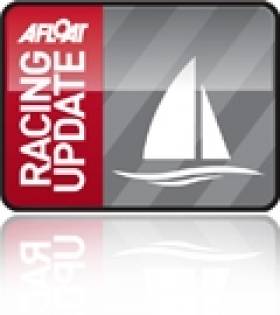Displaying items by tag: Milford marinas
70 Squibs Head for Dun Laoghaire
More than 70 Squibs will converge on Dun Laoghaire this weekend for the start of its SF Marinas sponsored UK national championships.
The championships, which are held in Ireland every five years, will see some of the top competitors in this class including Dick Batt, a sailmaker and chief measurer for the Beijing and London Olympics and Irishman Owen Delaney, former Irish Helmsman Champion of Champions.
There is also keen interest from a wide range of clubs including the Royal North of Ireland Yacht Club and Kinsale Yacht Club at the other end of the Island.
Squibs are two-man keelboats measuring seven metres long. They are favoured both as an exciting racing boat, because of their strength and safe design, and as a teaching boat. The Squib Class fleet is one of the largest one-design fleets in Britain and Ireland, with over 810 boats.
The Royal St George Yacht Club says it is delighted to have been selected by the Squib Class to host the 2010 Championship which is a great opportunity to show what Dublin Bay can offer, including its beauty, the varied sailing waters, and the vagaries of the tides.
“We believe Dun Laoghaire, both on and off the water, is a wonderful venue to make Squibs 2010 a memorable event.”
The sponsors of this year’s championship are marine services company, SF MARINA IRELAND, which last month installed new, all concrete, breakwater pontoons at the Royal Saint George Yacht Club, a great addition to the clubs facilities.
SF MARINA IRELAND builds marinas and installs floating pontoons and breakwaters all over the island of Ireland as well as the UK. The directors are Rod and Julie Calder-Potts who trade under the name, Milford Marina Systems, based in Cuffesgrange, Co Kilkenny.
Recently, the company designed and fitted concrete pontoons weighing 1,000 tonnes on the River Liffey to service the Waterbuses Spirit of Docklands and Liffey Voyage. The project consisted of a mega yacht visitors berthing facility on the Custom House Quay and three waterbus landing stages - one at The Point, one south-east of The Ha’Penny Bridge and one at the mouth of George’s Dock on Custom House Quay.
SF MARINA IRELAND is the sole Irish agent for Swedish company SF MARINA specializing in the supply and installation of floating concrete breakwaters that can stand up to the rigorous maritime conditions.
Rod Calder Potts said the company is very proud to be associated with the historic Royal Saint George Yacht Club and with the Squibs National Championships.
He said the installation of the new pontoons last month was the company’s third major installation in Dun Laoghaire Harbour and the eighth in the Dublin Bay area. “We enjoy the challenge of dealing with the difficult Irish tides, winds and waves. It is a pleasure and a privilege dealing with the wonderful sailing clubs around Dublin Bay.” he said.
























































